Maqluba or makloubeh is a Middle Eastern upside down chicken and rice dish that’s served in various permutations across the Levant. It’s often referred to as the national dish of Palestine and it’s something I grew up eating mostly on special occasions. With 7-spice, cinnamon, cardamom, and bay leaves, it’s highly aromatic and makes a great dinner-in-one meal.
Traditionally, the vegetables are deep fried, but this is a healthier and easier version using baked vegetables. Serve with a simple Jerusalem chopped salad, Lebanese tabouli, shatta (chili paste), plain yogurt, or the cucumber yogurt salad from my book, Seed to Table.

Table of Contents
What is Maqluba?
Also spelled maqlooba, makloubeh, maaluba, magluba, or maqlouba, it’s a traditional Palestinian dish with written records dating back to the Middle Ages that’s commonly served all across the Levantine region. Made with deep-fried vegetables, rice, and meat (usually chicken or lamb) it’s not only delicious, but also makes for an impressive dinner.
It’s layered with the vegetables, rice, and chicken, alternating the layers to get a beautiful multi-level dish when it’s flipped upside down onto a large serving platter. Maqluba means upside-down or overturned in Arabic, so this really is upside-down rice.
It is the pinnacle in Palestinian recipes and is joined at the top by other important dishes like Musakhan (sumac chicken), Hashweh (spiced rice with ground beef) and Maftoul (chicken with pearl couscous).
Ingredients
Most of the ingredients for this dish are easy to find at any grocery store.

- Basmati rice: while basmati is best (long grain, not short) parboiled rice or Egyptian rice works too. Try my other basmati rice recipes (Vermicelli Rice and Saffron Rice).
- Vegetables: mix and match the vegetables to best suit your needs. Summer squash and bell peppers are great too.
- Chicken: breast meat or bone-in chicken can also be used. This can be made with lamb or beef cubes, but they require pre-boiling to tenderize. If going this route, the boiling liquid can replace the chicken stock.
- Ground Spices: 7-spice (baharat) can be purchased at a Middle Eastern grocer or online, or you can make it yourself. This Middle Eastern spice blend is used in many recipes like Authentic Shish Tawook, Arayes (meat stuffed pita), Moghrabieh (couscous and chicken stew), Chicken Kafta and Beef Kofta.
- Whole spices: Use the freshest possible bay leaves, cinnamon stick, and green cardamom.
- Almonds: omit altogether if preferred, or use something like cashews or toasted pine nuts.
See the recipe card for full information on ingredients and quantities.
How to Prepare this Palestinian Maqluba Recipe
There are a few steps for this recipe, with browning the chicken and baking the vegetables recipe, so it’s a good idea to read through everything before beginning. Maqluba isn’t complicated, but it does contain several elements.

1. Soak the rice: rinse the rice well under cold water, then cover with an inch of water and soak for at least half an hour. This can be set aside while you prepare the other ingredients (Image 1).
2. Bake the vegetables: mix the vegetables with the oil and spices, then bake until lightly golden brown (Image 2).
3. Prepare the chicken: season the chicken thighs, then fry for a few minutes each side. The meat should be lightly browned to add flavor (Image 3).
4. Fry the aromatics: using the same pan as for the chicken, quickly fry the onions and garlic, then set aside (Image 4).

5. Layer: drain the rice and mix with the 7-spice. Add oil to a large non-stick pot, then layer the bottom of the pot with the tomato slices, soaked rice, vegetables, rice, chicken pieces, vegetables, rice, and so on, until several layers have formed and all of the elements are used (Images 5-9).

6. Pack down: use your hands to pack the layers down firmly, then poke a few holes in the rice with a chopstick or wooden spoon handle (Image 10).
7. Add the stock and cook: pour the chicken stock carefully over the rice, then place bay leaves, cinnamon, and cardamom overtop. Some of the chicken or vegetables may float. That’s OK. Cook on medium low heat for 30-40 minutes (Image 11).
8. Rest and serve: once the rice is cooked, let the maqluba rest, covered, for another 10 minutes. Remove the spices from the top of the rice, then confidently flip the pot over onto a large plate and carefully lift the pot away. Top with almonds and parsley and serve (Image 12-13).
Expert Tips
- Use long-grain rice: short grain rice is stickier and won’t have as nice of a texture. Long-grain basmati is ideal and it’s what I recommend using in my other rice dishes like Vermicelli Rice.
- Choose a heavy pot: if you have one, use a Dutch oven, or another nonstick pot with a heavy lid that will seal well.
- Seal the lid: if you don’t have a heavy pot, seal the lid with tin foil if needed.
- Make it vegan: for a good vegetarian or vegan option, use more vegetables in place of the chicken, and substitute vegetable broth for the stock.
- Poke those holes: if you don’t poke a few holes in the rice before adding the stock, it won’t penetrate through all the layers and you’ll get an uneven cook.
- Fry the veggies: Traditionally, the vegetables are fried in oil. If you plan to fry them, make sure to drain excess oil on paper towels.
- Use a sturdy serving dish. I like using metal serving platters or even a paella pan will do.

Recipe FAQs
It’s generally thought that the dish originated in Palestine and Jordan, but has been an important part of Levantine cuisine for centuries and is made across the Middle East.
Rice, vegetables (usually eggplant, tomato, and others) and meat, typically lamb, beef, or chicken. Spices are an important part of the dish.
A recipe for it is found in a 13th century recipe collection, so it is likely older than that.
This can’t really be made ahead, but you can roast the vegetables a couple of days in advance, and keep them in a sealed container in the fridge until use.
Leftovers can be refrigerated for 3-4 days in a sealed container. Freezing: transfer fully cooled chicken maqluba to an airtight container and freeze for up to a month. Thaw in the refrigerator.
More Levantine Recipes
Main Dishes
Levantine Recipes
Levantine Recipes
Appetizers
If you make this Palestinian Maqluba Recipe or any other main dishes on Urban Farm and Kitchen, please take a moment to rate the recipe ⭐⭐⭐⭐⭐ and leave a comment below. It’s such a help to others who want to try the recipe.
For more Urban Farm and Kitchen, follow along on Instagram, Facebook, and Pinterest, visit the Urban Farm Shop, or subscribe for new posts via email.
Palestinian Maqluba (Upside-Down Rice and Chicken)
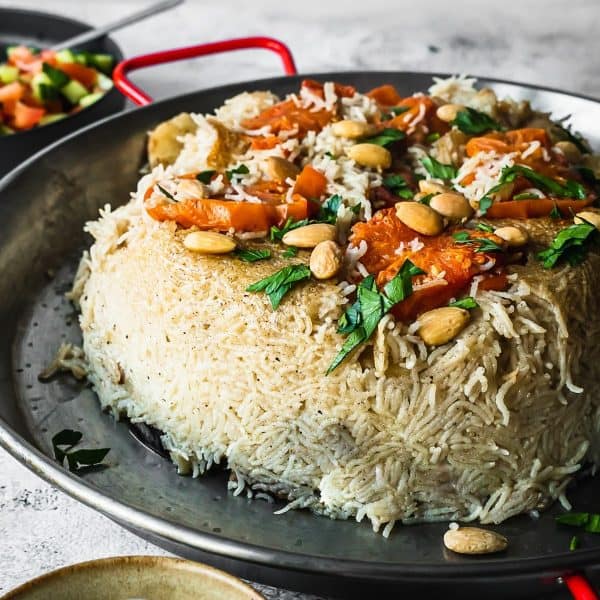
Equipment
- Large pot with tight lid Preferably non-stick
Ingredients
- 3 cups Basmati rice
- Kosher salt
- 2 cups Cauliflower florets – About half a cauliflower
- 1 Eggplant – sliced into 1/2" (1cm) rings
- 2 Potatoes – peeled, sliced into 1/2" (1cm) rings
- 5 tbsp Extra virgin olive oil – Divided
- 3 tsp 7-Spice (Baharat) – Divided (See note)
- Fresh cracked black pepper
- 1 ½ lbs Chicken thighs – Skinless, boneless
- 1 Onion – Diced
- 4 Garlic cloves – Minced
- 2 Tomatoes – sliced into 1/2" (1cm) rings
- 4 cups Chicken broth – Boxes or canned work fine. You can also dilute a bouillon cube in water. Might need more, see note
- 2 Bay leaves
- 2 Cinnamon sticks
- 4-6 Cardamom pods
- Chopped parsley and roasted almonds for garnish
Instructions
- Soak the rice. Rinse the rice under cold water in a sieve until the water runs clear. Transfer the rice to a bowl, season with 2 teaspoons of salt and cover with water (cover with at least an inch of water). Set aside to soak for at least 30 minutes, but preferably 2 hours.
- Bake the vegetables. Preheat your oven to 400F. On a rimmed baking sheet, place cauliflower florets, eggplant slices and potato slices. Brush with extra virgin olive oil and season with 1 teaspoon 7-spice, salt and pepper. Bake for 15-20 minutes. The vegetables don't have to be cooked all the way through but should have some browning.
- Prepare the chicken. Season chicken thighs with salt, pepper and 1 tsp 7-Spice. In a large frying pan, add 1 tablespoon of olive oil. Fry the chicken on medium-high heat for 5-7 minutes, on each side. You're looking for some color to form on the chicken. Transfer the chicken thighs to a plate.
- Fry aromatics. To the same pan, add 1 tablespoon of olive oil (if needed) and fry the onions and garlic with a pinch of salt on medium heat, for 2-3 minutes. Set aside.
- Layer. Drain the rice and mix in 1 teaspoon of 7-spice. To a large non-stick pot, add 2 tablespoons of olive oil. Begin layering with sliced tomatoes, followed by a handful of seasoned rice and then a single layer of vegetables (onions, garlic, potatoes, cauliflower, eggplant). Scatter a handful or two of rice. Layer the chicken thighs, more vegetables and more rice, alternating as you layer. It doesn't have to be perfect, but make sure you finish with a nice layer of rice.
- Pack down. Pack everything down lightly with your hands and using a chopstick of a wooden spoon handle, poke 4 or 5 holes into the rice so that the liquid can penetrate.
- Add the liquid and cook. Carefully add 4 cups chicken stock to the pot. The liquid should just cover the rice. Add bay leaves, cinnamon sticks and cardamom pods and an additional teaspoon of salt. Some of the chicken or vegetables may float. That's ok. Cover the pot, bring to a boil, and turn down the heat to medium-low. Cook for 30-40 minutes. If your pot lid doesn't hold steam in, you can use a sheet of aluminum foil to help seal the lid.
- Rest and serve. Take a peek under the lid. The rice should be cooked. return the lid and let the maqluba rest for 10 minutes. Remove the lid and pull out the bay leaves, cinnamon sticks and cardamom pods. They should be at the top. Place a large inverted rimmed platter over the pot. Confidently flip the pot and plate over. Do this as quickly and safely as you can, like you're flipping a cake. Carefully pull the pot up revealing the maqluba. It might not be pretty, but it will be delicious. Garnish with fresh parsley and toasted almonds. Serve with salad and yogurt.
Notes
- Basmati rice: while basmati is best (long grain, not short) parboiled rice works too.
- Vegetables: mix and match the vegetables to best suit your needs. Summer squash and bell peppers are great too.
- Chicken: breast meat or bone-in chicken can also be used. This can be made with lamb or beef cubes, but they require pre-boiling to tenderize. If going this route, the boiling liquid can replace the chicken stock.
- Almonds: omit altogether if preferred, or use something like cashews or toasted pine nuts.
Nutrition
Nutrition information is automatically calculated, so should only be used as an approximation.
 Like this recipe? Rate & comment below!
Like this recipe? Rate & comment below!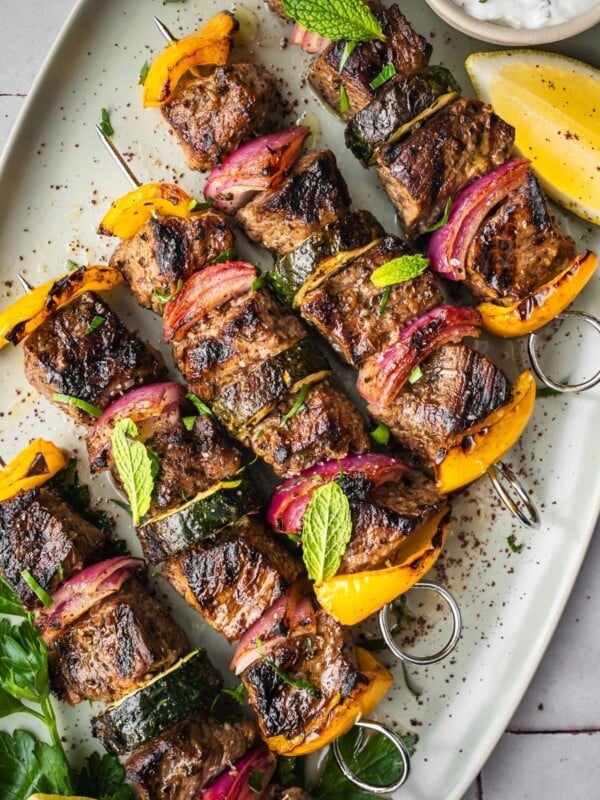

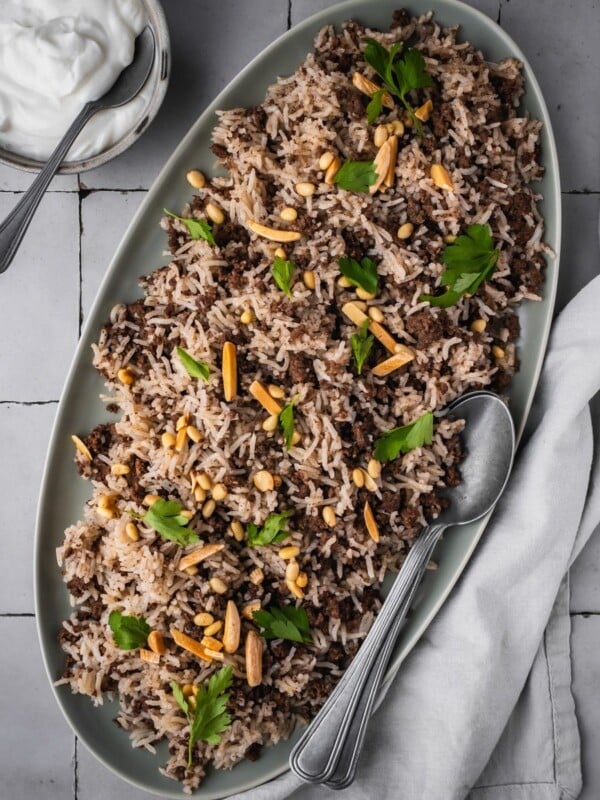
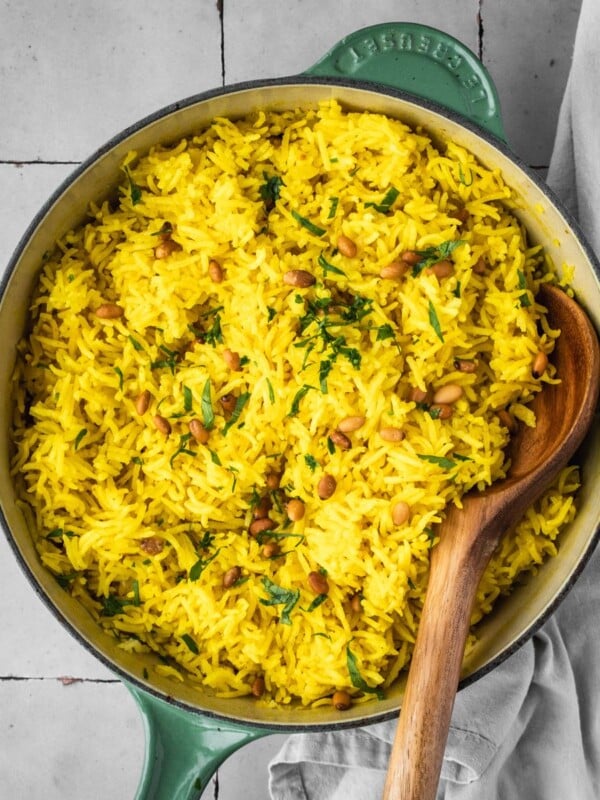
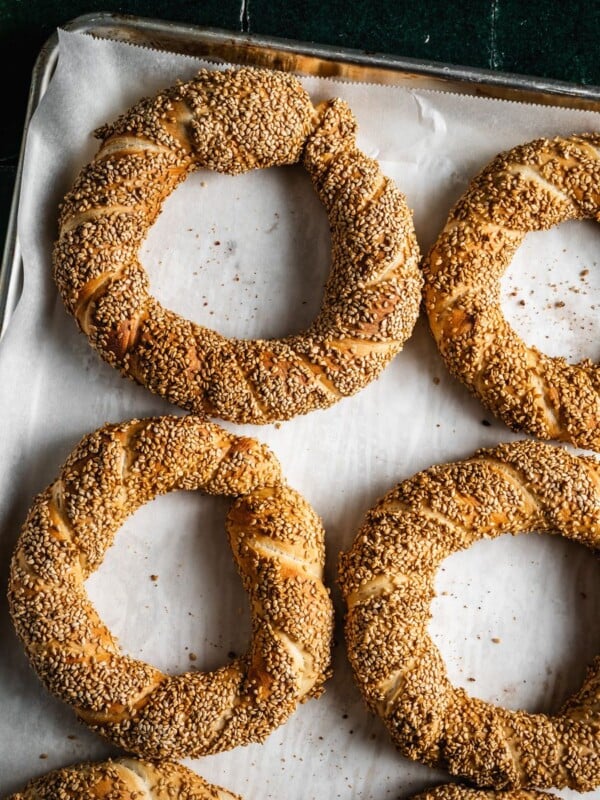
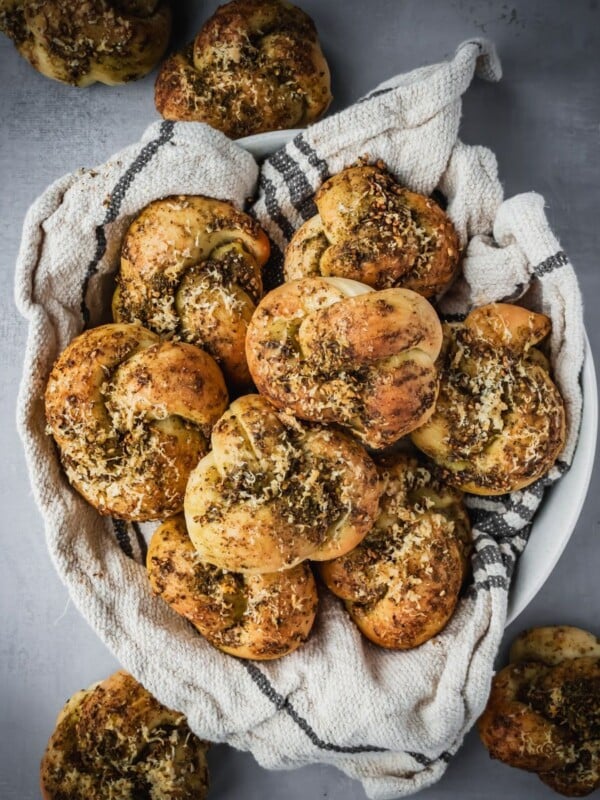
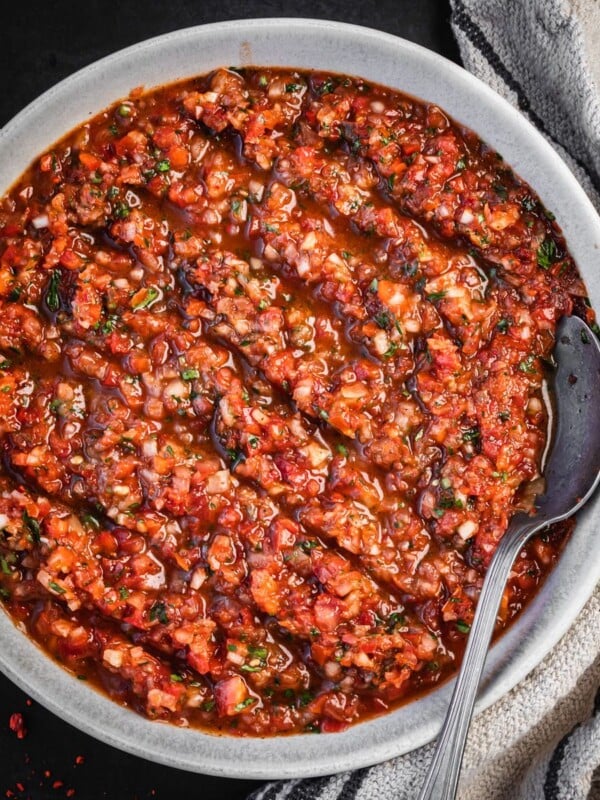
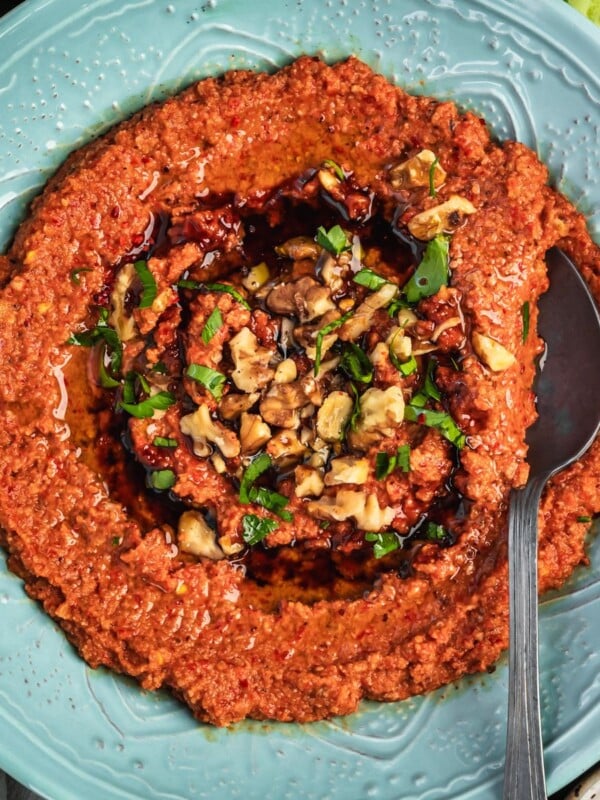








I did and the rice turned out mushy even though I used very little water.
How many grams are 3 cups of rice?
About 95 grams of uncooked basmati is 1 cup.
So yummy. It’s a super cozy dish, definitely a new comfort food!
Thank you for the feedback, Samantha!
I didn’t dear turn it, but it was still so good! All those amazing tastes! I replaced the potatoes with chickpeas, which worked perfectly. First recipe ever to have too much per portion;-) we were 4 hungry people, and were not able to finish 50%. We’ve had it again today, and will continue eating it for a few days. Made cucumber labneh and bulgur salad, and it was the perfect companions. Had pomegranate, parsley and cashew on the top.
Had an amazing Palestinian wine with it, to make the experience even more authentic.
Thank you for introducing me to this dish!
It’s definitely a recipe for big crowds and celebrations. So glad you enjoyed it.
We wanted a traditional Palestinian dish to celebrate Passover, to remind us of the hope for liberation and autonomy for our Palestinian brothers and sisters. I found many recipes, but decided to mostly follow this one, making a few small changes as we are vegan.
I honestly didn’t have high hopes, I’m not sure why. It was not only SOOOOO delicious, it was so fun to do the flip and reveal the layers.
I plan to continue making it, to continue keeping it as a reminder of the work that needs to be done, and the reward that will come when it is complete.
Thank you for your beautiful recipe, I really can’t belive how yummy it is!
Thank you so much, Amanda. I am glad to hear that you were able to customize the recipe to your needs and it still worked for you.
I’m making this tonight in solidarity with the Palestinian people! It’s on the stove cooking now and it smells delicious! What a beautiful recipe. Thank you! And FREE PALESTINE!
Thank you! Hope you enjoyed the recipe!
I made this tonight on a whim after seeing a child in Gaza making what he called “fake maqluba” or “wartime maqluba” without any meat. He was so inspiring, and his “fake” maqluba looked so beautiful and delicious that it made me want some—even thought I’ve never had it before. This recipe was amazing and easy to follow, thank you. Free Palestine!
Thank you for sharing.
How many grams are 3 cups of rice?
Hi, thanks for this recipe which I followed today. I liked the way you broke down the recipe into clear steps. I only got stuck at the part where you wrote “chicken stock” because it’s not clear where the stock comes from, so I made chicken stock separately with the whole spices you mentioned to layer on top of the rice. But making the stock with separate pieces of chicken seemed to be an extra work. I assume you used chicken cubes or you had made the stock separately ahead of time?
Hi Karishma. You can use boxed stock or make your own by diluting some bouillon cube in water.
Hi Luay, thanks a lot for your reply. The maqluba turned out really delicious and I will be making it again and again. I had bought a bottle of Baharat just for this recipe but now using it for many other dishes as well! Thanks a lot for the recipe.
Am making this for the second time; the first time it turned out great. Just want to ask where in the recipe do we use the onion and garlic mix that we fried in the oil after the chicken? Thanks for sharing the recipe.
The onion mixture is layered with the vegetables.